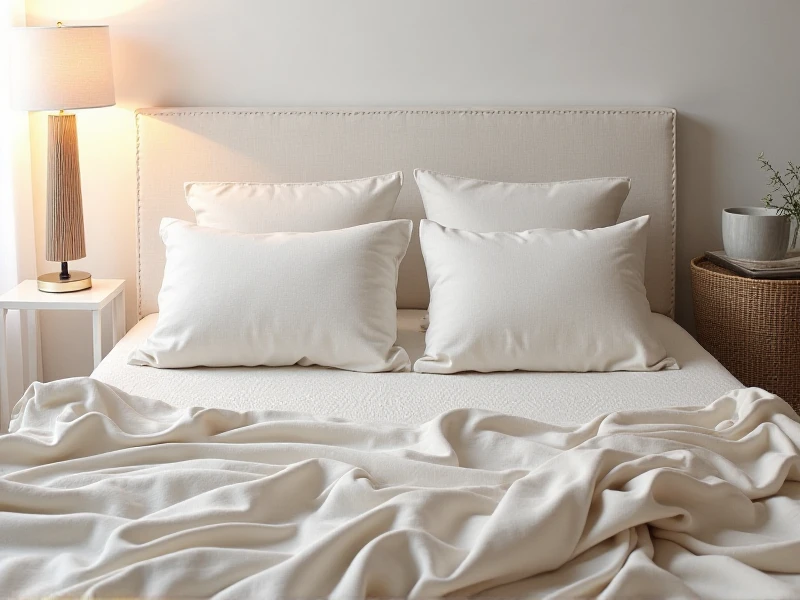The Ultimate Guide to Finding Your Perfect Pillowcase
2025-06-10

When it comes to sleep comfort, many people overlook something as simple as a pillowcase. Yet, the right pillowcase can transform your nights from restless to rejuvenating. It's not just about aesthetics; it's about health, hygiene, and overall well-being. A pillowcase protects your pillow from everyday wear and tear, while also shielding your skin and hair from damage caused by friction overnight. If you've ever woken up with frizzy hair or irritated skin, your pillowcase might be the culprit. In this guide, we'll dive into everything you need to know to choose the best pillowcase for your lifestyle, ensuring better sleep and more vibrant mornings. Whether you're upgrading your bedroom or dealing with allergies, a thoughtful pillowcase choice can make all the difference.
Why Your Pillowcase Matters More Than You Think
Your pillowcase is in direct contact with your face for hours every night. This close proximity means it absorbs oils, sweat, and dead skin cells over time. Without a high-quality pillowcase, these substances can clog pores, worsen acne, or even trigger allergic reactions. Moreover, a well-chosen pillowcase reduces skin irritation, prevents hair breakage, and helps regulate temperature for a cooler sleep. In short, investing in the right pillowcase is one of the easiest ways to boost nighttime wellness without breaking the bank.
Exploring Different Types of Pillowcases
Not all pillowcases are created equal. They come in various shapes, sizes, and materials, each offering unique benefits. Standard sizes include standard, queen, and king, but always measure your pillow to ensure a snug fit. As for closures, options like zippered or envelope-style designs keep pillows securely in place. When it comes to materials, the pillowcase fabric plays a huge role in comfort. Cotton is a classic choice for its breathability and affordability, making it ideal for everyday use. Silk pillowcases, on the other hand, are prized for their smooth texture, which minimizes friction for sensitive skin and reduces hair tangles. Microfiber variants offer durability and easy care, perfect for busy households. By understanding these differences, you can match your pillowcase to your specific needs.
The Best Materials for Pillowcases: Pros and Cons
Selecting a pillowcase material depends on personal priorities like skin health, budget, and maintenance. Cotton pillowcases are affordable and widely available. Opt for 100% cotton or Egyptian cotton for superior softness and breathability. They wick moisture away, keeping you cool in summer. Silk pillowcases are luxurious and gentle, often made from naturally hypoallergenic mulberry silk. They're excellent for preventing wrinkles and frizz, but they come at a higher price point and require delicate washing. For eco-conscious shoppers, bamboo or Tencel pillowcases are sustainable options; they're silky-soft, hypoallergenic, and great for reducing sweat. Finally, polyester blends are budget-friendly and wrinkle-resistant, but they might trap heat. Weighing these factors helps you pick the pillowcase that enhances your sleep routine.
How to Choose the Right Pillowcase for Your Needs
Finding your perfect pillowcase involves considering a few key elements. First, assess your sleep habits: if you tend to sleep hot, look for breathable materials like cotton or bamboo. For sensitive skin or hair concerns, silk pillowcases offer gentle protection. Next, consider thread count—though often overhyped, a count of 200-400 provides a durable, soft feel. Also, factor in care requirements: easy-care options like microfiber save time, while silk needs hand-washing. Don't forget about style; pillowcases come in countless colors and patterns to match your decor. Always prioritize quality over quantity—an investment pillowcase lasts longer and pays off in comfort. Start by browsing reputable brands or trying a sample set to test materials in person.
Care Tips for Your Pillowcases
Proper maintenance extends the life of your pillowcase and ensures hygiene. Most pillowcases can be machine-washed weekly in cold water with mild detergent to remove oils and allergens. Avoid bleach or harsh chemicals that degrade fabric. For silk pillowcases, turn them inside out and use a gentle cycle or hand-wash with mild soap. Always air-dry them to prevent shrinkage, as high heat can damage the material. Rotate pillowcases frequently—having two sets per pillow allows for swapping, reducing wear. With easy steps like these, your pillowcase stays fresh and functional for years.
In conclusion, the ideal pillowcase is a small detail with big rewards. By focusing on quality materials and personal needs, you can enhance your sleep quality dramatically. Remember, a great pillowcase supports healthier skin, minimizes morning frizz, and turns your bed into a sanctuary. It's a simple upgrade for lasting comfort—try experimenting with different types to discover what works best for you. After all, restful sleep starts with the basics, and your pillow is where it all begins.
Category: